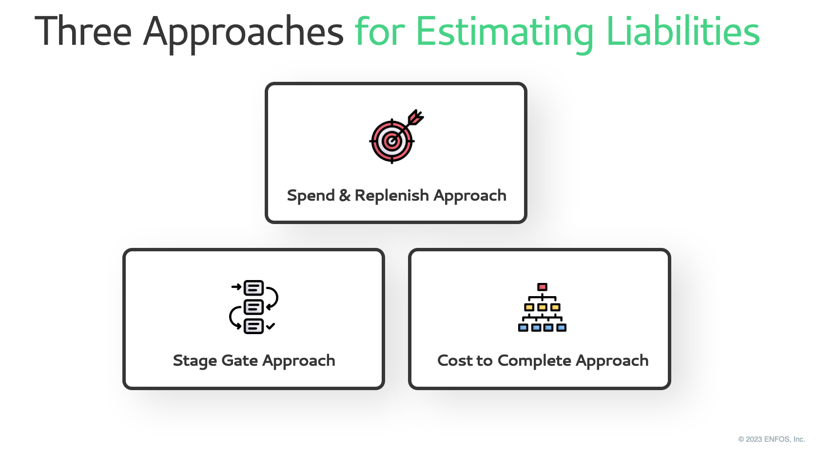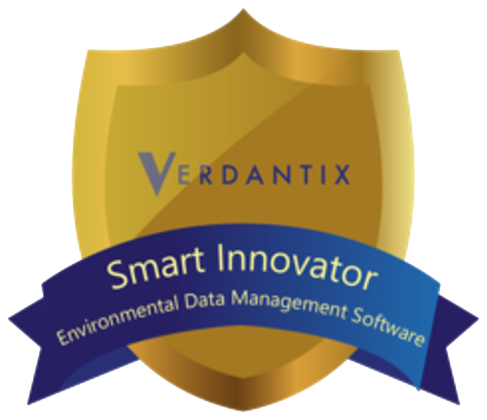What you’ll learn in this blog
- A look of the three common approaches to estimating environmental liabilities.
- An examination of the major attributes of each approach.
- Determining which model might be the best fit for your remediation project.
Have you just been given a project with financials already set up and you’re not really sure how it works? Do you know what the financial model is called and how to report up to your boss?
Remediation project financial liability estimating can be very complicated. It can involve a whole team of geologists, engineers, managers, accountants, and chemists. If you “own” the project, you need to understand how to “walk the talk” when you are responsible for the money used on the project.
In this blog, we will cover the three common practices of estimating environmental liabilities. Perhaps you will recognize one of these techniques in place at your organization. We will also discuss the key attributes of the estimating practices when they are used.
The Spend and Replenish Approach
When you hear “Spend and Replenish Approach”, it means that as we're spending money on a project during a period (like a quarter or annually), we're putting money back into the balance for the next period. Spend and Replenish can refer to a project or an entire program. The overall budget ends up being a flat line through time. So, it's kind of like a dollar for dollar or very close representation of that.
The Stage Gate Approach
The “Stage Gate Approach” is where we’re forecasting step-by-step, in phases or in small groups of combined phases (e.g., site characterization and feasibility study). As the project progresses, usually around major milestones, we're moving into a more stable and predictable phases, such as long-term monitoring. For example, for a site that is done with characterization, remedy design and selection, it’s time to forecast for the construction and operation and maintenance phases, the next major milestones to complete.
The Cost to Complete Approach
The “Cost to Complete Approach” is where our customers in the industry will use full life cycle estimating regardless which phase their project is in, i.e., from the beginning or very early on in the life of a new remediation project. Similar historical projects are often used as the basis for the estimate.
All of these approaches are strategic selections made by customers who need to estimate their environmental liabilities. These approaches align with the finance or accounting policy. Does your funding source get replenished once, regularly, or on a materiality basis when trigger events occur? Each of the approaches have their attributes. So, let’s take a closer look at these three, plus a hybrid approach, so that you can understand and make better choices for your organization.

Major Attributes of Each Approach and Why They are Used
Spend and Replenish Approach - Spend a Dollar, Replenish the Balance a Dollar
This strategic approach is typically used on remediation portfolios that are financially well reserved or on large stable portfolios. The portfolio of sites is mature and in a balanced distribution of new sites coming in versus existing sites being completed. Key attributes for the Spend and Replenish Approach include:
- May also be called a “Reserve Top-Off”;
- The emphasis is on setting and hitting an annual-operating plan;
- Based on the desire or the business need for consistency and predictability of cash flow; and
- This method is often bundled with annual-purchase commitments (they expire at the end of each fiscal year).

Stage Gate Approach - Forecasting on Phase(s) Increments Only as Project Progresses
The Stage Gate Approach is a partial life-cycle estimate. As in Spend and Replenish, project and portfolio spend adjustments should be expected though time. Fiscal adjustments can be routinely conducted quarterly, annually, or triggered by a major event. Characteristics to note of the Stage Gate Approach include:
- Higher degree of certainty in each phase estimate;
- Aligned with decision gates at key milestones;
- Fits very well with the accounting requirements around probable and estimable definition; and
- Distribution of your projects by phase is very important for that long-term outlook. This allows the organization to predict future large increases or decreases in the reserve.
Cost to Complete Approach - Full Lifecycle Estimate Regardless of Current Phase
The Cost to Complete Approach is a full life-cycle estimate, usually built from the bottom up, project by project. It should include all of the historical data, including costs around facility types, demographics, and so on. This technique is done sometimes before the design and remedial selection is chosen. Key features of Cost to Complete are:
- Relies heavily on subject-matter input and your knowledge base of past projects;
- Multiple planning scenarios are used so that there can be a range of outcomes;
- Requires strong change management; and
- Attempt for a full disclosure based on known liabilities at any point in time.
Hybrids and Variations
Hybrid approaches may exist in an overall program on complex sites, versus simple sites. A very clear understanding of which method used and when needs to be established, i.e., a good change management process and system is employed by all members of the team.
Variations on estimating liabilities can include:
- Long-term monitoring and O&M projects may use Spend and Replenish because annual costs do not have much variation;
- Using Stage Gate at remedy selection and then transition to a Cost to Complete;
- Cost to Complete on a fairly standard routine-type project or, for complex sites, and milestones, use Stage Gate-type approach.
As you can see, business strategies around liabilities differ between firms and between projects. ENFOS can help to reduce our customers level of effort, automating business workflows, and minimizing risks. Our software configurations, which, in business terms, are business rules, and our project controls are linked to our customers' business strategies to ensure compliance, auditability, and completeness.
Learn more about how ENFOS can help you manage liability better regardless of which approach (or even hybrid) your organization uses. Book a consultation now.




